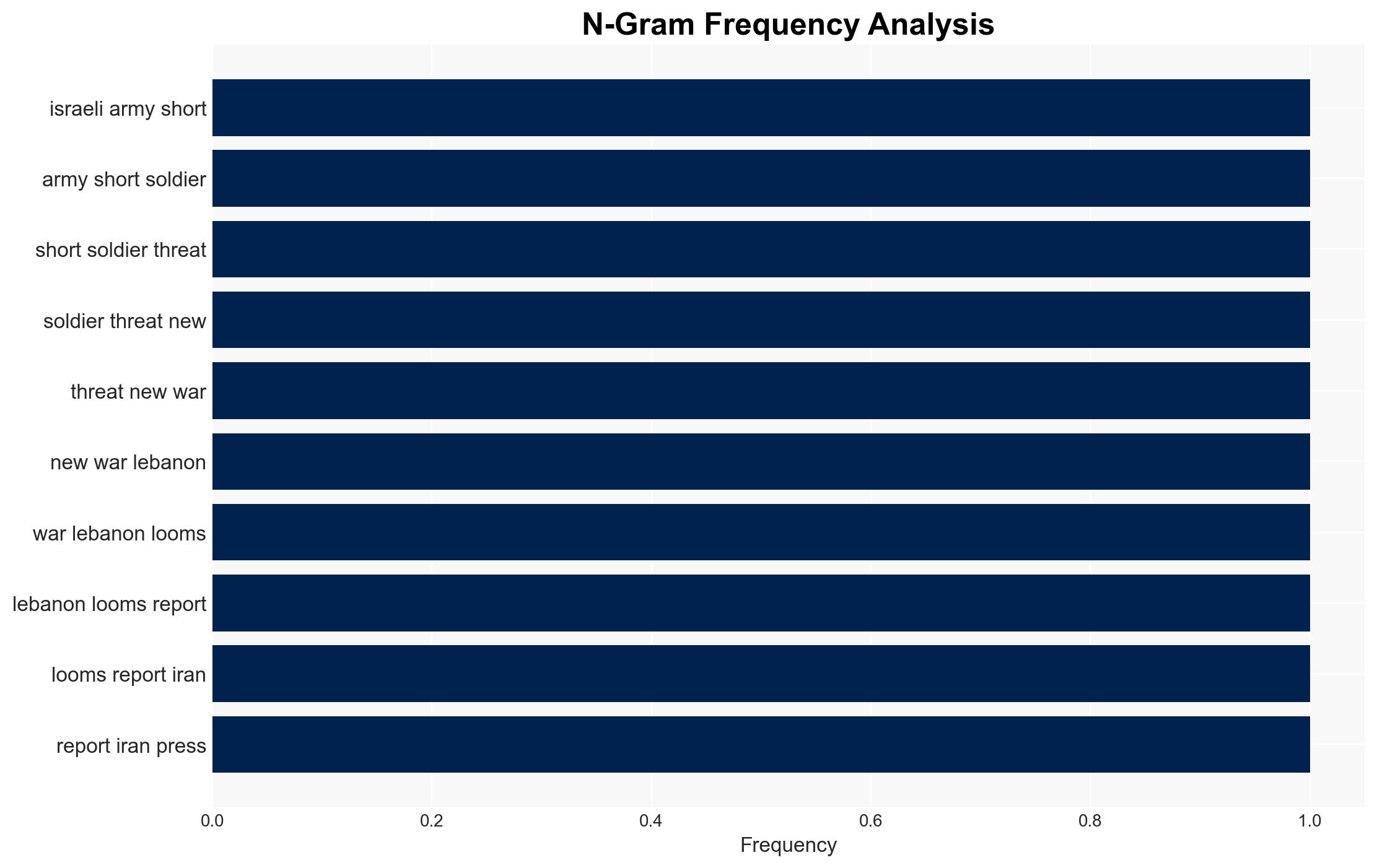Israeli army short of 1000s of soldiers as threat of new war on Lebanon looms Report – Globalsecurity.org
Published on: 2025-11-12
AI-powered OSINT brief from verified open sources. Automated NLP signal extraction with human verification. See our Methodology and Why WorldWideWatchers.
Intelligence Report: Israeli army short of 1000s of soldiers as threat of new war on Lebanon looms Report – Globalsecurity.org
1. BLUF (Bottom Line Up Front)
There is a moderate confidence level that the Israeli army’s reported personnel shortages could impact its readiness for a potential conflict with Hezbollah in Lebanon. The most supported hypothesis suggests that Israel’s military is actively preparing for a potential escalation, while simultaneously attempting to pressure Lebanon into disarming Hezbollah through diplomatic channels. Strategic recommendations include enhancing intelligence sharing with allies and increasing diplomatic efforts to de-escalate tensions.
2. Competing Hypotheses
Hypothesis 1: The Israeli army’s personnel shortage is a significant vulnerability that could hinder its operational readiness in the event of a conflict with Hezbollah. This hypothesis is supported by the reported depletion in ranks and the need to broaden the pool of eligible recruits.
Hypothesis 2: The personnel shortage is being overstated as part of a strategic narrative to justify increased recruitment and military spending, while simultaneously applying pressure on Lebanon to disarm Hezbollah. This hypothesis considers the possibility of strategic communication aimed at influencing both domestic and international audiences.
Hypothesis 1 is more likely given the detailed reports of recruitment plans and the context of heightened tensions, but Hypothesis 2 cannot be entirely discounted due to potential strategic motives behind publicizing the shortage.
3. Key Assumptions and Red Flags
Key assumptions include the reliability of the reported personnel shortage and the assumption that Hezbollah remains a significant threat. Red flags include the potential for biased reporting from sources with vested interests, such as Iranian and Israeli media. Deception indicators might include exaggerated claims of shortages to manipulate public perception or international diplomacy.
4. Implications and Strategic Risks
The primary risk is the potential for rapid escalation into a broader conflict involving regional actors. Political risks include destabilization within Lebanon if pressure to disarm Hezbollah leads to internal conflict. Economic risks could arise from disrupted trade routes and increased military spending. Informational risks involve the spread of propaganda and misinformation exacerbating tensions.
5. Recommendations and Outlook
- Enhance intelligence sharing with key allies, particularly the United States and European partners, to gain a comprehensive understanding of the situation.
- Increase diplomatic engagement with Lebanon and regional stakeholders to de-escalate tensions and explore disarmament options for Hezbollah.
- Best-case scenario: Successful diplomatic efforts lead to a reduction in tensions and a peaceful resolution.
- Worst-case scenario: Escalation into a full-scale conflict involving multiple regional actors.
- Most-likely scenario: Continued low-level skirmishes and diplomatic posturing without significant escalation.
6. Key Individuals and Entities
Brigadier General Shai Tayeb – Israeli military planning and personnel administration.
Mahmoud Qomati – Deputy head of Hezbollah’s political council.
Samir Ali Faqih – Hezbollah commander reportedly killed in Israeli airstrike.
7. Thematic Tags
Counter-Terrorism
Structured Analytic Techniques Applied
- ACH 2.0: Reconstruct likely threat actor intentions via hypothesis testing and structured refutation.
- Indicators Development: Track radicalization signals and propaganda patterns to anticipate operational planning.
- Narrative Pattern Analysis: Analyze spread/adaptation of ideological narratives for recruitment/incitement signals.
Explore more:
Counter-Terrorism Briefs ·
Daily Summary ·
Methodology





